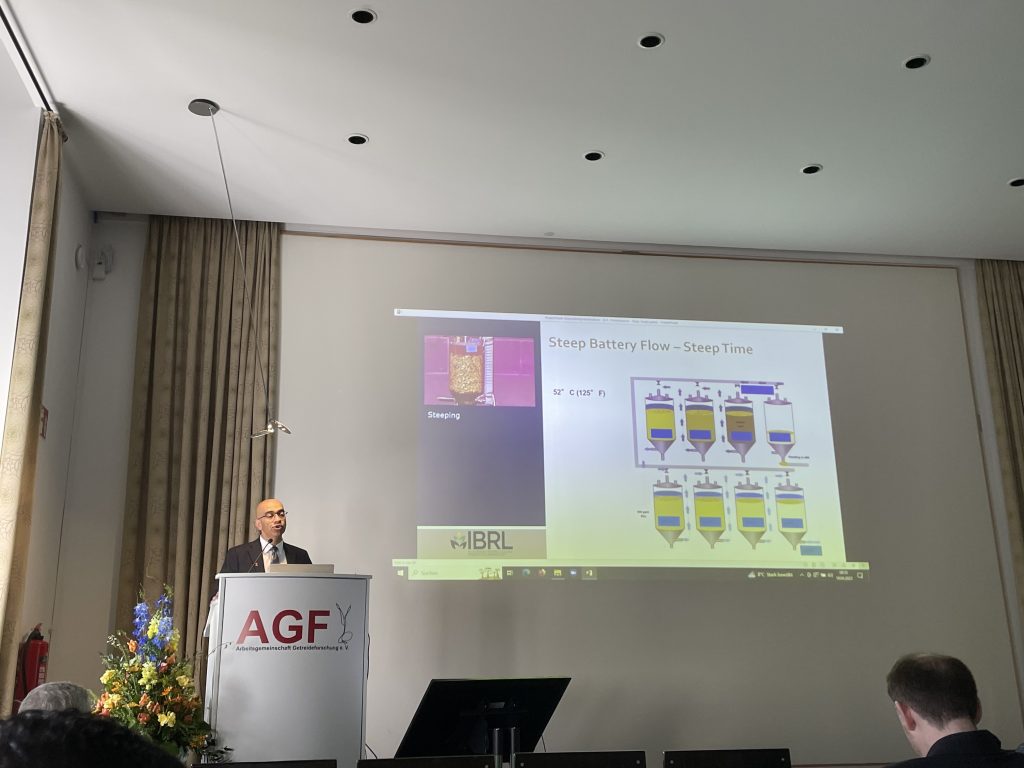As a part of the AGF Starch Convention, held from April 18-19, 2023, U.S. Grains Council (USGC) Consultant Dr. Vijay Singh of the University of Illinois Urbana Champaign presented the most recent results of the Council’s study on industrial starch to a group of European and Middle Eastern starch industry representatives, as well as starch researchers. The convention was followed by a series of meetings in Amsterdam to further engage and educate plant representatives on the benefits of U.S. corn for wet milling.
In his presentation, Singh highlighted the genetic composition of U.S. corn, noting that its softer endosperm allows for easier milling and shorter steeping times at 24 hours, as opposed to upwards of 40 hours for corn from other origins. As a part of this discussion, a key point has been the difference between starch content in corn and starch extractability. While starch content is relatively consistent between origins, ranging from 71 to 74 percent, real starch extractability had a higher range, from 56 to 72 percent. In this metric, U.S. origin corn performed noticeably higher than its other counterparts, yielding 1.7 to 4 percent higher starch. The key example used in this presentation was based on the lab results of samples sent from Egypt, which found that U.S.-origin corn extracted anywhere from 1.77 to 3.85 percent more starch compared to Brazilian, Argentinean and Indonesian corn.
“The findings will benefit the wet milling industry with regard to their profits and maximization of U.S. corn. Every one percent increase in starch yields would reflect one million dollars in additional revenue, assuming that the plant processes 1,000 metric tons (MT) per day,” said Alexander Grabois, USGC manager of global strategies and trade.
As the academic study of this project comes to a close, the next steps involve undertaking commercial trials at plants located around the world to test and verify the results in a large scale setting. The trials will also shed light on how plants can optimize the use of U.S. corn through solutions for milling broken corn, whether that be through the implementation of equipment such as short steeping systems or innovative ways to reincorporate broken corn into corn gluten feed (CGF) or corn gluten meal (CGM).
“This program was an opportunity to raise awareness of the value of U.S. corn in global markets while also demonstrating to key stakeholders in the research arena that there are definitive benefits to U.S. corn. The benefits have now become known by the industry and the commodity is gaining traction among commercial partners. The impact of these purchasing decisions can benefit not only U.S. farmers and the agriculture industry but also global starch practices worldwide by maximizing potential in output, profit and optimization of corn usage through solutions that would increase usage of broken corn kernels,” Grabois said.
Read more about the Council’s work in Europe here.
About The U.S. Grains Council
The U.S. Grains Council develops export markets for U.S. barley, corn, sorghum and related products including distiller’s dried grains with solubles (DDGS) and ethanol. With full-time presence in 28 locations, the Council operates programs in more than 50 countries and the European Union. The Council believes exports are vital to global economic development and to U.S. agriculture’s profitability. Detailed information about the Council and its programs is online at www.grains.org.

